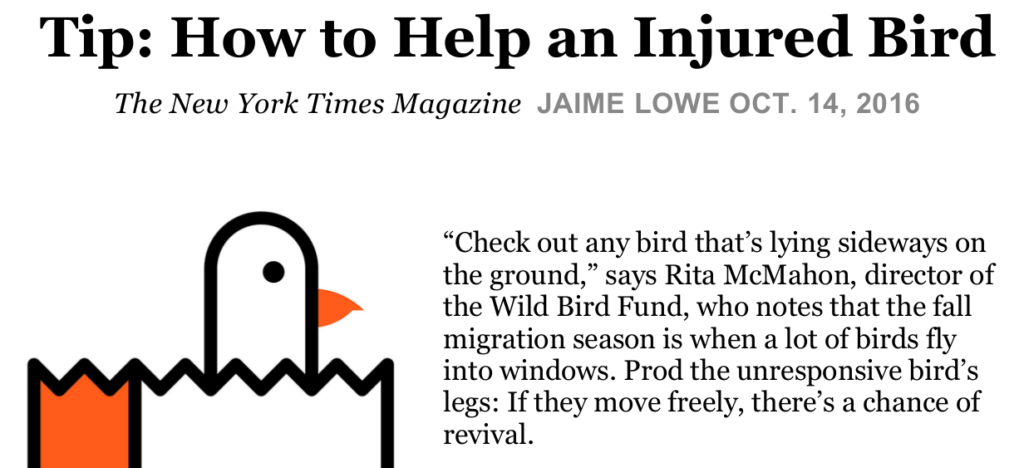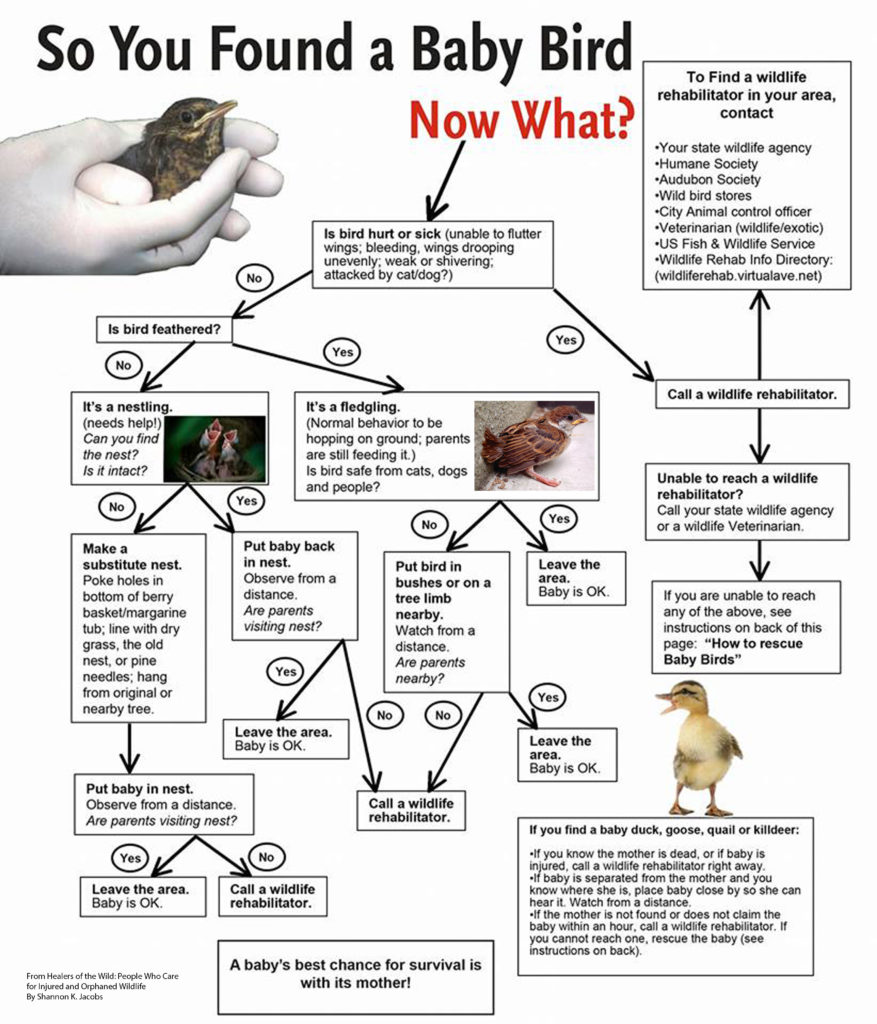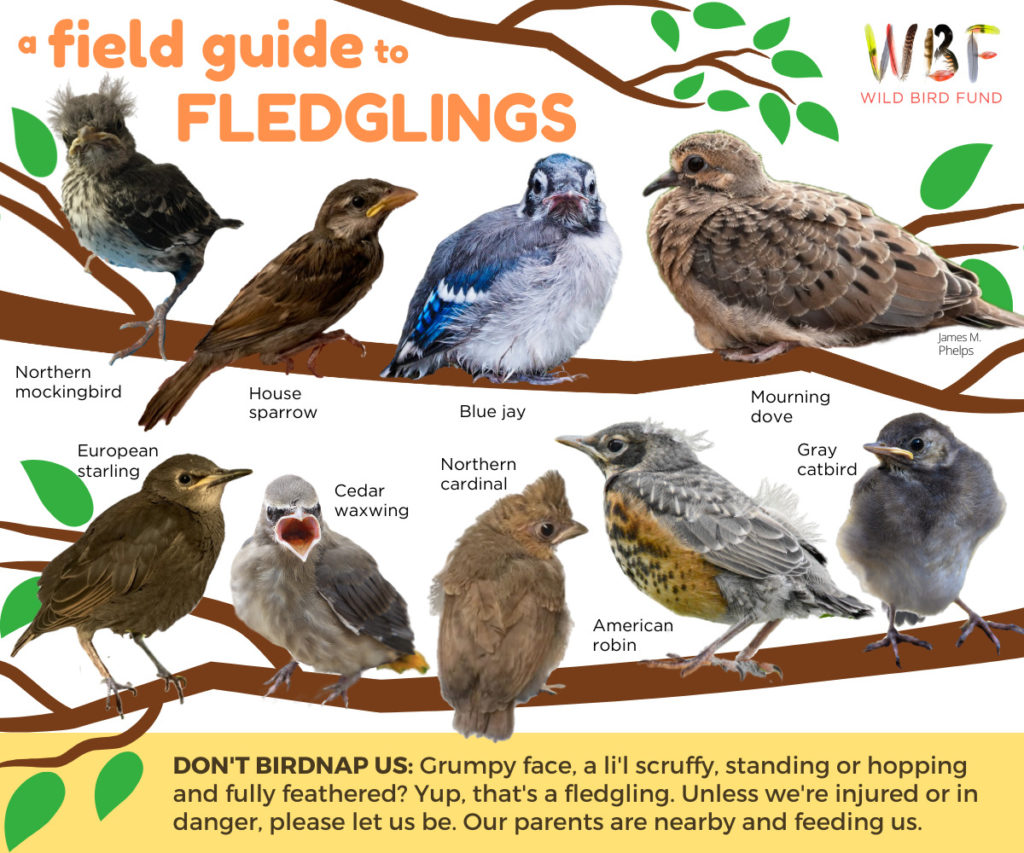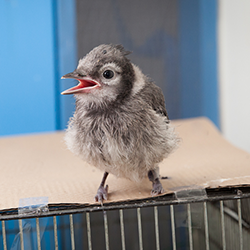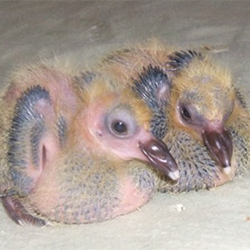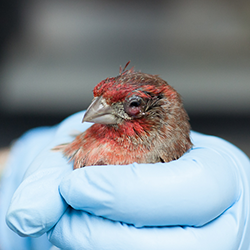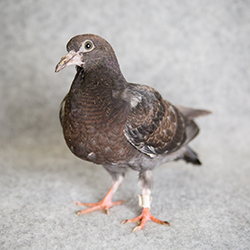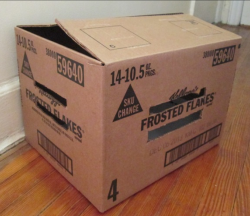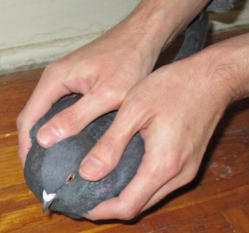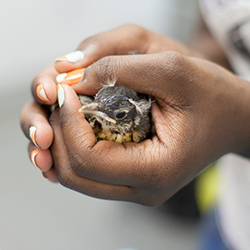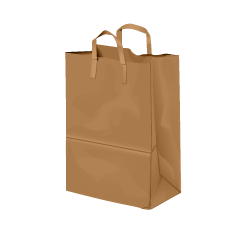Rescue
Leave Fledglings Alone
- If the baby bird has feathers and is hopping on the ground, this is normal behavior. The parents are still feeding it. Leave the baby bird alone. Its parents are far better at teaching it survival skills than we are.
- If your child brings home a healthy fledgling, return it as quickly as possible to the place it was found. Then step back thirty feet or so and wait for up to 45 minutes to see if an adult bird flies down to feed the youngster. It can be quite a battle to get the “rescuer” to bring the young bird back to its parents, but when accomplished, the reunion can be a joy to watch.
Return Nestlings to their Nest
- If the baby bird does not have feathers, it is a nestling and needs to be returned to its nest. A baby’s best chance for survival is its parents.
- If the nest is intact, put the baby back in and observe from a distance to ensure the parents are visiting the nest.
- If the nest has been damaged, make a substitute by poking holes in the bottom of a berry basket/margarine tub; line with dry grass, the old nest, or pine needles; hang from original or nearby tree. Observe from a distance to ensure the parents are visiting the nest.
- If you can’t reach or find the nest, keep the baby warm (a heated rice sock or hand warmer wrapped in a towel next to the baby), and quickly bring the bird to the Wild Bird Fund or a licensed wildlife rehabilitator near you. Please do not wait. This baby has a very short time to get help.
- NEVER FEED A BABY BIRD. Do not provide any food or water. Babies can easily suffer serious harm or death by aspirating liquid or receiving food that is inappropriate for their species. All the advice you will find by Googling is dangerously incorrect.
Is the Bird Injured?
- If the baby bird is unable to flutter wings; bleeding, wings drooping unevenly; weak or shivering; attacked by cat/dog, gently pick up the baby and put it in a paper bag or small box with holes in it.
- If the baby is shivering, wrap a warm water bottle in a towel and place it next to the baby.
- Do not give the baby food or water. Do not bother or handle it. Keep children away.
- Bring it to WBF immediately. Call us at 646-306-2862 or email us if you’re not sure what to do.
Don’t be Afraid
- The pigeon is a symbol of peace for a reason. There is nothing the pigeon can do to hurt you.
- Fears of disease transmission from pigeons are largely unfounded. Most pigeon diseases only transmit to other birds, not to people. All you have to do is wash your hands with soap
- Lice and mites on birds are species-specific. This means they only live on birds, not humans. Keep the bird away from your body and wash your hands afterward.
Before Approaching the Bird…
- Have ready a small box or a pet carrier to put the bird in once it has been rescued. You can also use a large paper bag, but put something strong on the bottom like sheets of newspaper or a piece of cardboard. Make small holes for air.
- Have another person to help you if possible. One of you can corner the bird or distract it while the other can try to catch it from behind.
- Make sure there is nobody or nothing nearby that might interfere with the rescue, then quietly approach the bird from behind.
Pick Up the Bird
- The best way to pick up the bird is to use your bare hands. Restrain its wings by holding the bird firmly between your hands. Then quickly put it in the box/carrier/paper bag.
- If you are not comfortable handling the bird with your bare hands, you can use light thin gloves, but avoid heavy ones or mittens that will make the capture more awkward and much more likely to be unsuccessful. Remember, you might only have one chance to catch the bird.
- Throwing a heavy towel (preferably a dark-colored one) over the bird is also an option, especially for an injured bird that can fly or walk fast.
Temporary Housing
- A pet carrier is the best for temporarily housing the bird. But if you don’t have one, find a cardboard box (12” x 12” x 12” or slightly bigger) and cut rectangular holes on the sides. Make sure enough light gets into the box so that the bird can see water and seeds.
- Spread sheets of newspaper on the bottom of the housing and then cover the newspaper with paper towel.
- If the bird has a injured leg or foot, it is good for the bird to have support to its body. Make a doughnut shape with a rolled up dish towel, cover it with paper towel and put the bird inside the doughnut so the injured leg can hang free.
Keep It Safe Overnight
- Keep the bird in a warm, quiet place, away from children and pets.
- A small dish of water is fine, but please do not feed the bird, especially if it is puffed up or lethargic. Many injured or sick pigeons have not been able to eat for days and are severely emaciated. They are not able to digest food, and it will cause them much more harm.
- Please bring the bird into the clinic as soon as we are open. Do not wait. Many birds only have a few hours to benefit from rehabilitative care.
Contact Us for Further Advice
Wild Bird Fund, Inc
565 Columbus Avenue (Bet. 87th & 88th St.)
New York, NY 10024
646-306-2862
Gently Pick Up the Bird
- Quietly approach the bird from behind, directly opposite the way its beak is pointing. This will put you in the bird’s blind spot, making it less likely to be startled. (A startled bird can fly into a window again and re-injure itself.)
- Quickly cup your hands around the bird.
Put It Into a Brown Paper Bag
- To prevent escape, use your free hand to close the top of the bag around your wrist as your withdraw your hand from the bag.
- Fold over the top of the bag once or twice and clip it shut with a clothespin or binder clip.
- Bring the bird to the Wild Bird Fund or a licensed wildlife rehabilitator near you. We do not suggest releasing the bird, even if it begins to flutter in the bag. We’ve learned that, even if a bird becomes active after a collision, it can later die of its injuries.
- If you have no way of reaching a wildlife rehabber, then the second-best option is to release the bird in a safe spot (away from buildings) after a few hours, only if it has become very active in the bag.

